The wispy beauty of the palo blanco tree belies its ability to handle the tough growing conditions of the desert, including areas with reflected heat. The attractive foliage of this desert native, along with its distinctive white trunk and peeling bark, makes the palo blanco a prized addition to the Southwestern landscape. The name palo blanco is Spanish for "white stick," referring to the beautiful white trunk of this desert tree.
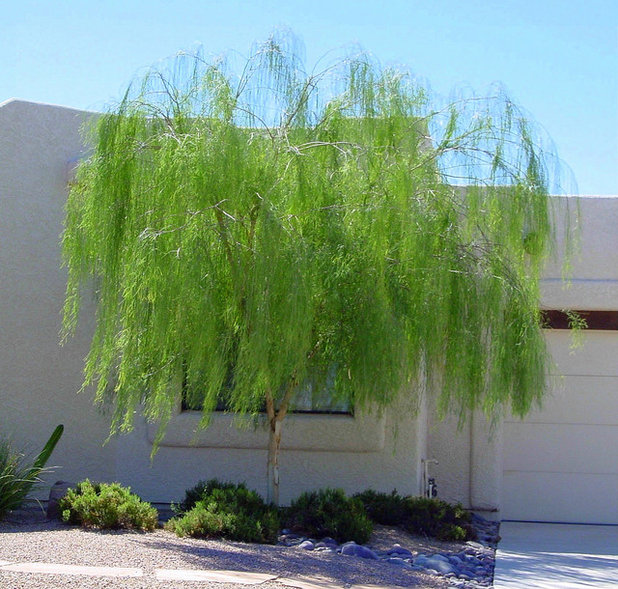
Noelle Johnson Landscape Consulting
Botanical name: Acacia willardiana
Common name: Palo blanco
Origin: Native to Arizona and Mexico
Where it will grow: Hardy to 25 degrees Fahrenheit (USDA zones 9 to 11; find your zone)
Water requirement: Low
Light requirement: Full sun
Mature size: 20 feet tall and 15 feet wide
Benefits and tolerances: Drought tolerant once established, but looks best with deep watering once or twice a month
Seasonal interest: Flowers in spring; deciduous in winter
When to plant: Spring, summer or fall
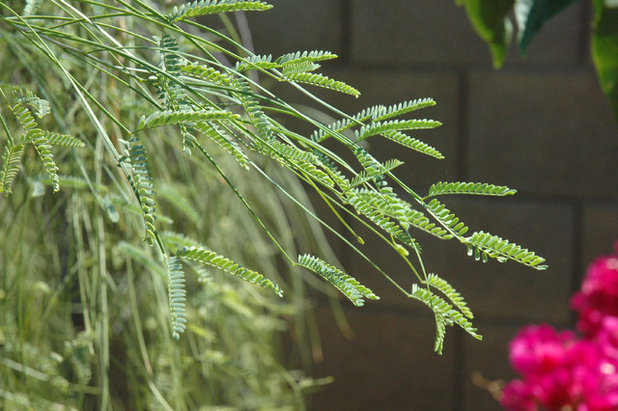
Noelle Johnson Landscape Consulting
Distinguishing traits. Delicately beautiful palo blanco, with its soft texture, provides contrast in the desert landscape against the sharp angles of many agave and cacti. The willow-like foliage is made up of phyllodes, which are elongated petioles. Tiny leaflets appear in spring at the ends of the phyllodes. The leaflets drop during times of drought, but since the phyllodes also enable photosynthesis, the tree can survive without the leaflets.
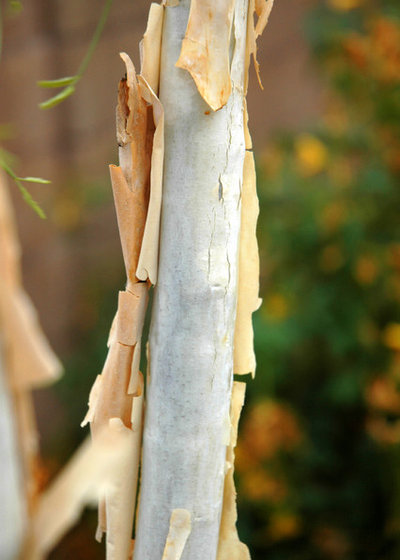
Noelle Johnson Landscape Consulting
Deciduous in winter, palo blanco trees branch out from a central trunk. The papery bark peels away to reveal the beautiful white trunk, which is why this little tree is so highly desired.
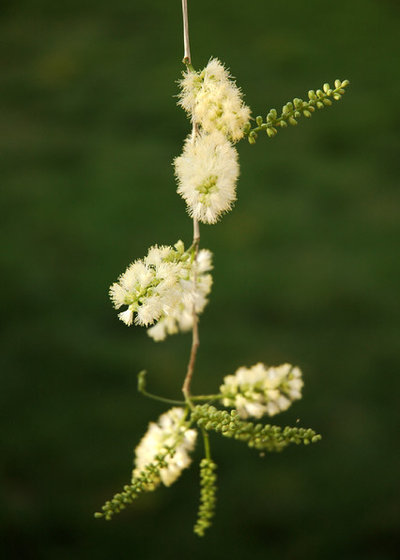
Noelle Johnson Landscape Consulting
In spring creamy white catkin flowers appear that are soon followed by long, papery seedpods.
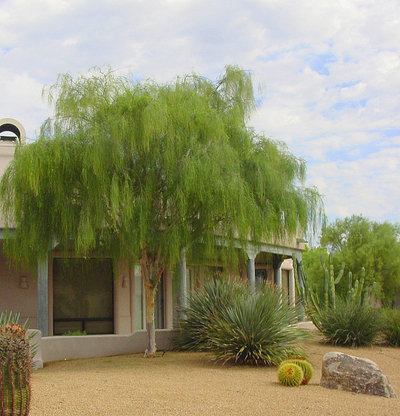
Noelle Johnson Landscape Consulting
How to use it. Palo blanco is the perfect tree for small, narrow spaces, such as a side yard. It thrives in small spaces with reflected sun, like a courtyard or patio.
It provides very light shade, so most plants that need full sun, such as angelita daisy, penstemon or
verbena, can do well planted underneath.
You can plant palo blanco trees in groups of three or five to maximize their visual impact in the landscape.
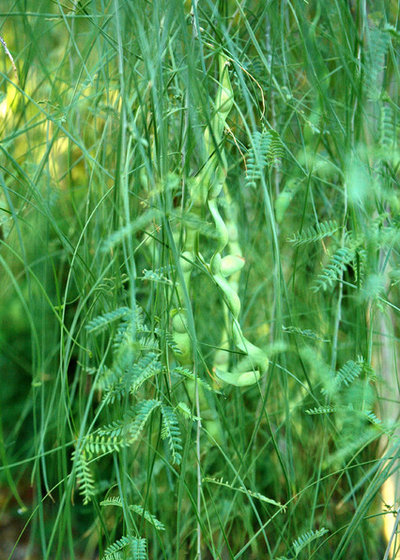
Noelle Johnson Landscape Consulting
Planting notes. Palo blanco trees aren't fussy. In fact, they thrive in difficult conditions. They need full sun and well-drained soil. Dig a hole three times as wide as the root ball to help the roots grow outward. The depth of the hole should be the same as the root ball — no deeper.
Palo blanco trees need little pruning, but if you're going to prune, do it in late spring after flowering.





